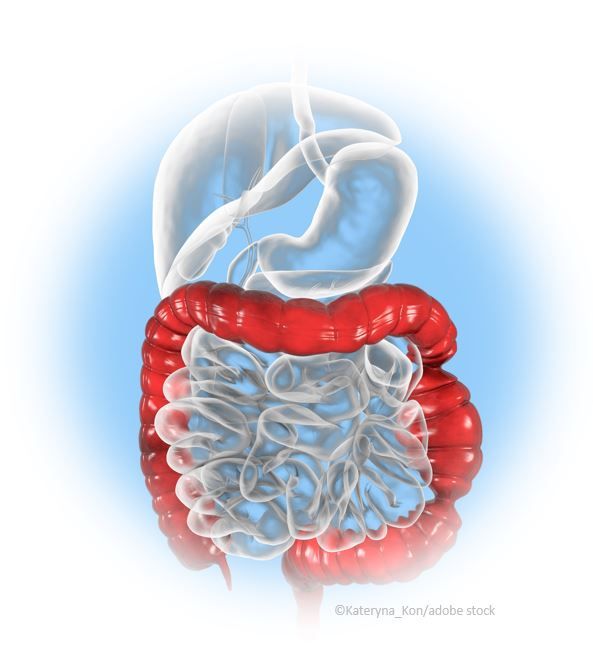- Clinical Technology
- Adult Immunization
- Hepatology
- Pediatric Immunization
- Screening
- Psychiatry
- Allergy
- Women's Health
- Cardiology
- Pediatrics
- Dermatology
- Endocrinology
- Pain Management
- Gastroenterology
- Infectious Disease
- Obesity Medicine
- Rheumatology
- Nephrology
- Neurology
- Pulmonology
Irritable Bowel Syndrome Cohort Analysis Identifies 7 Distinct Latent Subsets

In a large cohort of patients with irritable bowel syndrome (IBS), Mayo Clinic investigators identified 7 distinct subsets of IBS, characterized by clinical, dietary, lifestyle, and psychosocial factors. The findings, authors say, underscore the importance of expanding clinical profiles of IBS patients beyond GI symptoms based on predominant bowel habits.
IBS is currently defined as a disorder of the gut-brain axis with symptoms characterized by defecation-related abdominal pain and changes in consistency and/or frequency of bowel movements. Classification is based on 4 subtypes, diarrhea-predominant (IBS-D), constipation-predominant (IBS-C), or with alternating stool pattern (IBS-A) or pain-predominant. Currently there are no criteria for medical or psychiatric comorbidities, diet, or lifestyle patterns that may potentially impact a patient’s unique disease expression. Further, the authors point out, current treatment options target only abdominal pain and bowel dysfunction.
Currently there are no criteria for medical or psychiatric comorbidities, diet, or lifestyle patterns that may potentially impact a patient’s unique disease expression.
As context for their research, the Mayo Clinic team, led by Madhusudan Grover, MD, associate professor of medicine and physiology, Mayo Clinic Alix School of Medicine, in Rochester, MN, cite research that shows a higher prevalence of certain medical and psychosocial comorbidities among patients with IBS as well as functional deficits. Writing in Clinical Gastroenterology and Hepatology, they hypothesized that they would identify unique subsets of IBS with variable levels of associations with pain, bowel dysfunction, comorbidities, and diet/lifestyle changes.
For their original data, Grover et al used 40 291 responses to a questionnaire incorporating Rome III criteria for IBS distributed by the Mayo Clinic Biobank between 2013 and 2020.
From the original responses, investigators identified 4021 patients with IBS (mean age 64 years, 75% women) and 12 063 non-IBS control patients. Of the IBS patients 32% had IBS-D, 25% had IBS-C, 40% had mixed IBS, and 2% had unsubtyped IBS.
They determined factors associated with IBS (lifestyle/diet behaviors, weekly leisure activity score, and comorbid conditions), then applied latent class analysis, a model-based clustering, on all cases of IBS.
The researchers used 26 variables to distinguish IBS cases from control cases, with the resulting optimal clustering revealing 7 latent clusters. These were characterized by significantly higher perceived impairment of health (moderate or severe), higher prevalence of psychoneurological factors, and greater bowel dysfunction (IBS-C or IBS-D).
Optimal clustering revealed 7 latent clusters characterized by significantly higher perceived impairment of health (moderate or severe), higher prevalence of psychoneurological factors, and greater bowel dysfunction (IBS-C or IBS-D).
Grover and colleagues observed that the health-impairment cluster (33% of the IBS cases) reported more pain with the “severe” cluster also having more psychiatric comorbidities as well as non-GI pain (eg, fibromyalgia). The next 3 clusters (41% of IBS cases) were “uniquely enriched” with psychiatric comorbidities (eg, anxiety, depression), neurologic comorbidities such as migraines, or both psychiatric and neurologic comorbidities. The largest cluster, with 20% of the IBS cases, was the cluster with increased psychiatric comorbidities.
The 2 clusters characterized by greater bowel dysfunction comprised 24% of the IBS cases and had lower-than-average perceived health impairment or other comorbidities. Both clusters also reported less GI or non-GI related pain.
The findings may help guide patient stratification in this complex disease state, the authors write. The IBS phenotype has multiple dimensions “that may be driven by unique pathophysiology” that leads to a variable clinical course. Identifying phenotype, they say, could improve treatment of underlying and associated factors that may contribute to or exacerbate symptoms.
“Clinical trials and personalized treatment approaches may benefit from going beyond the current concepts of predominant bowel patterns and targeting specific clusters of IBS patients.”
Reference: Byale A, Lennon RJ, Gyale S, et al. High-dimensional clustering of 4000 irritable bowel syndrome patients reveals seven distinct disease subsets. Clin Gastroenterol Hepatol. 2022:S1542-3565(22)00917-X. doi.org/10.1016/j.cgh.2022.09.019
Clinical Tips for Using Antibiotics and Corticosteroids in IBD
January 5th 2013The goals of therapy for patients with inflammatory bowel disorder include inducing and maintaining a steroid-free remission, preventing and treating the complications of the disease, minimizing treatment toxicity, achieving mucosal healing, and enhancing quality of life.
